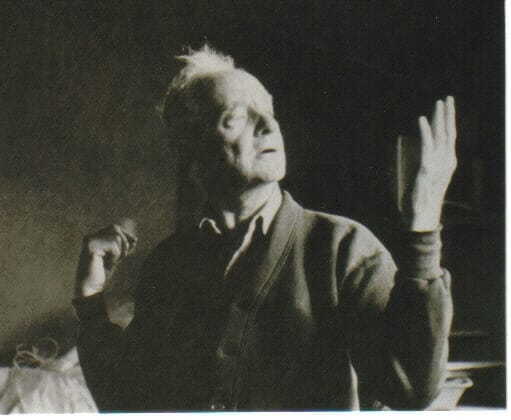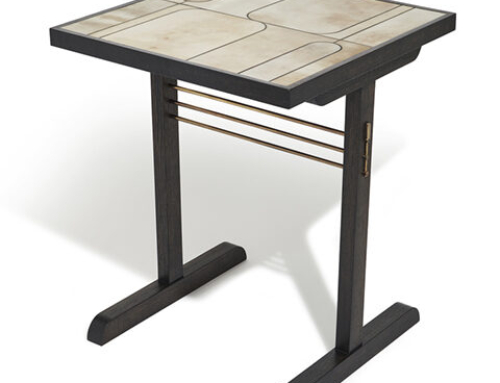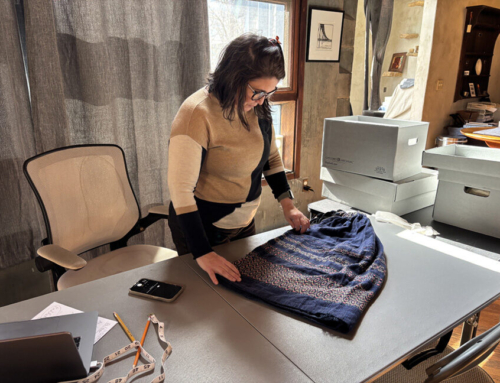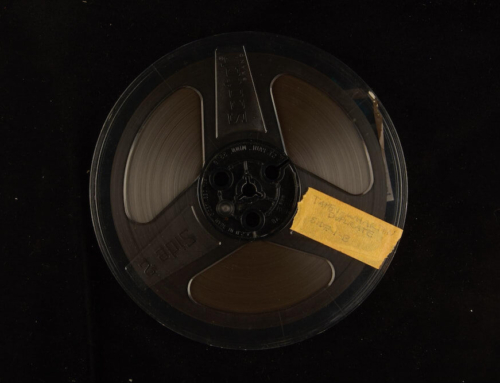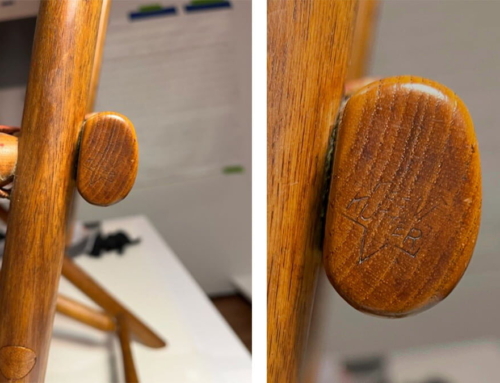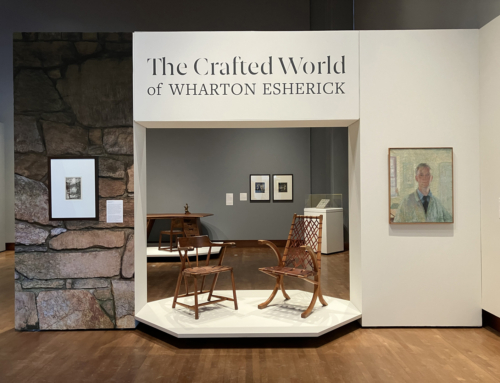A Teacher Appreciation Post
This month’s blog post was written by Visitor Engagement Manager, Maria Franey, who began volunteering with the Wharton Esherick Museum in 2014 and joined the staff in 2015. Her experience with the unconventional education of WEM and encounters with educators of all kinds inspired her to leave a career in law to pursue a new career in education. If you are curious about virtual field trips and other programs for your classroom, email Maria at [email protected].
Think of your favorite teacher. How long do you even have to think about it? You probably know their name. You definitely know what subject they taught and what grade you were in when they were your teacher. What makes a great teacher? What makes that teacher your favorite? If I had to guess, I’d say they inspired creativity and embraced your passions. That is certainly the case for my favorite teacher, a humanities teacher I had my senior year in high school. She was supportive and encouraging. She made art accessible, fun, and interesting. She instilled in me a lifelong love of art that brought me to the Wharton Esherick Museum. I owe her a huge debt of gratitude.
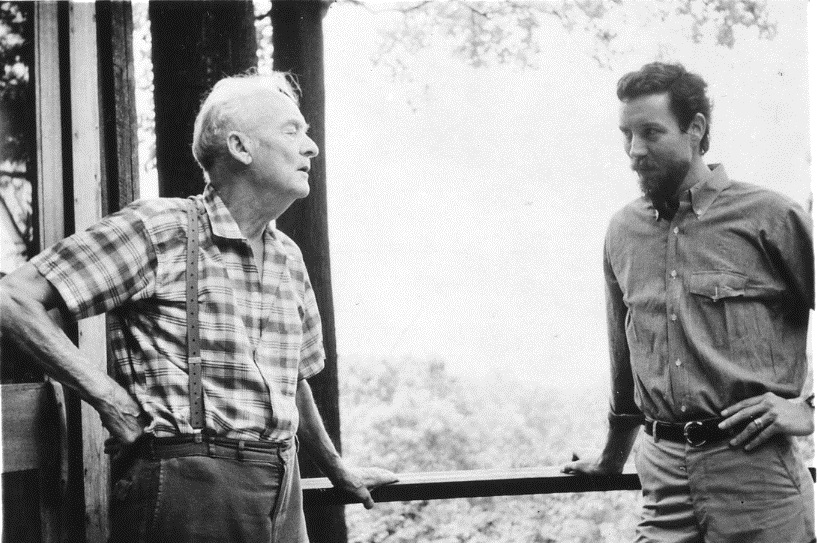
Wharton Esherick and Wendell Castle on Wharton’s deck c.1965
Though he never stood in front of a classroom, Wharton Esherick was also a teacher of sorts. Renowned artist Wendell Castle once described Esherick as, “my reluctant teacher,” referring to the sheer amount he learned from Esherick despite his, shall we say, less than willingness to take enthusiastic young artists under his wing. He went on to say that without Esherick’s unconventional tutelage, “I wouldn’t be what I am.” What made Esherick “reluctant”? Esherick taught through his objects — if you wanted to learn from him, he felt it was best to look at and experience his work, not listen to him speak. What’s more, there would be no point in teaching you how to create like him because you should learn to create like you! If inspiring a journey of self-discovery, as Esherick did for so many, doesn’t make you a great teacher, I’m not quite sure what would.
Today, in 2021, 51 years after his death, Esherick remains an unconventional educator of the highest order. Every year since 1972, when the Wharton Esherick Museum first opened its doors, thousands of learners (of all ages) have come to explore the Studio that Esherick once deemed his “castle.” No matter their age, they invariably leave better for the experience — including those not so few guests who leave saying, “I’m going home to remodel my house!”. The takeaway is always personal and unique. Esherick continues to teach us to look at the world in a new way. He expands our definition of art. He inspires us to try something new and to create.
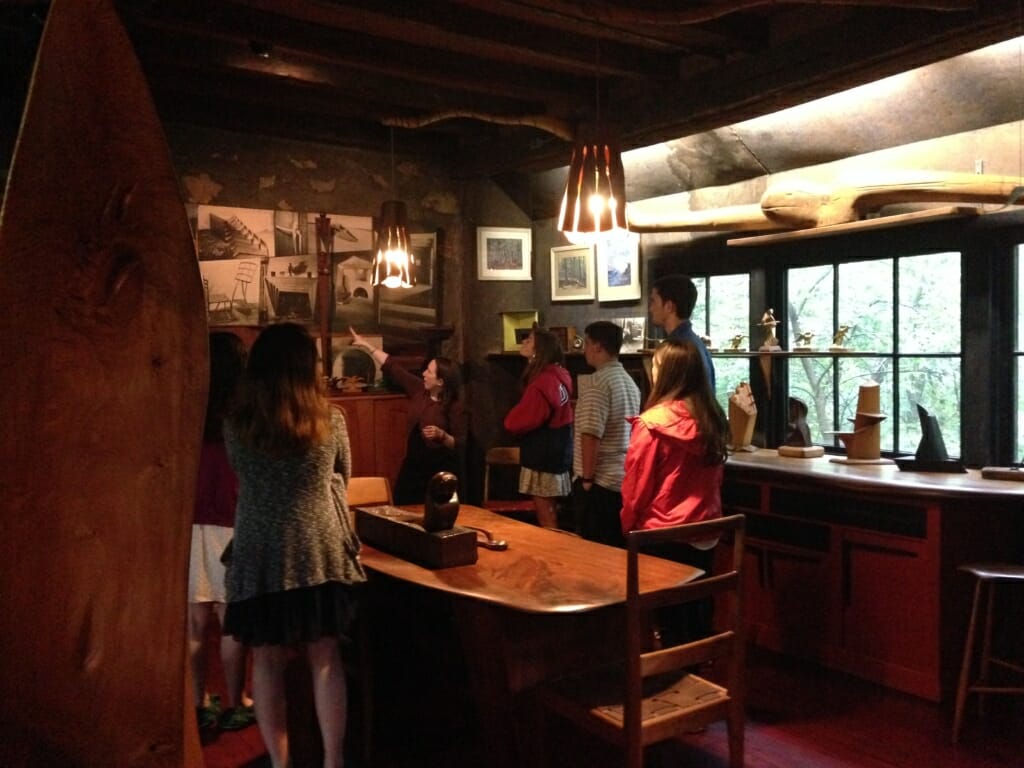
Students on tour at the Esherick Museum
The COVID-19 pandemic has taught us many lessons, just one of which being that you might be surprised where you find students… and their teachers. Esherick likely never considered himself a teacher, yet has inspired many. I am so proud to be a part of this lineage of outside-the-box educators who have joined Esherick in this never-ending lesson. On this team with me are classroom teachers who sought new and exciting learning opportunities for their students, beyond the confines of the classroom. There are parents, family, and friends, eager to share Esherick with their children and loved ones. There are also the dedicated volunteers and staff I am fortunate enough to call my colleagues. All of these educators have indeed challenged students to see beyond the literal and consider the world in new ways, just as Esherick did.

Národní dům na Vinohradech by Hannah Schermer, the Imprint 2021 First Place winner
At the Museum, the leadership of teachers was readily apparent as we embarked on another year of our high school printmaking competition and exhibition, Imprint. Despite seemingly insurmountable challenges faced by students and teachers alike this year, we received stunning submissions from local high schools, many of whom were teaching and learning printmaking virtually. The perseverance and creativity of these teachers and students inspired us. We, too, adapted to rapidly changing times. We made the decision to move Imprint from the small confines of Esherick’s 1927 garage to its new virtual home on the Museum’s website. To this was added a unit plan (Making an Imprint) for teachers, designed to introduce students to the art form, and a companion lesson plan entitled Fellow Citizen, meant to encourage exploration of the law and ethics, related to copyright, plagiarism, and art in the digital landscape.
What’s next for education initiatives at the Wharton Esherick Museum? Well, since we’ve so missed seeing school groups pass through our doors, we are excited to now offer virtual tours for students which can be catered to classroom needs. Naturally, Wharton has a great deal to teach us about art. What about literature? …Science? …Math? We are continuing to explore new ways Esherick can teach us, and build upon our At-Home Activities and lesson plans. In addition to a new slate of virtual school experiences, we are also starting a new virtual program series for our youngest audience members, our Storytime with Esherick series, on May 1st beginning with Rhymes of Early Jungle Folk (Marcy, 1922), the first book Esherick illustrated, marking his transition from painting into printmaking. Wherever the future takes us, we remain steadfast in our commitment to our mission and to doing our part to support teachers both within and beyond our community.
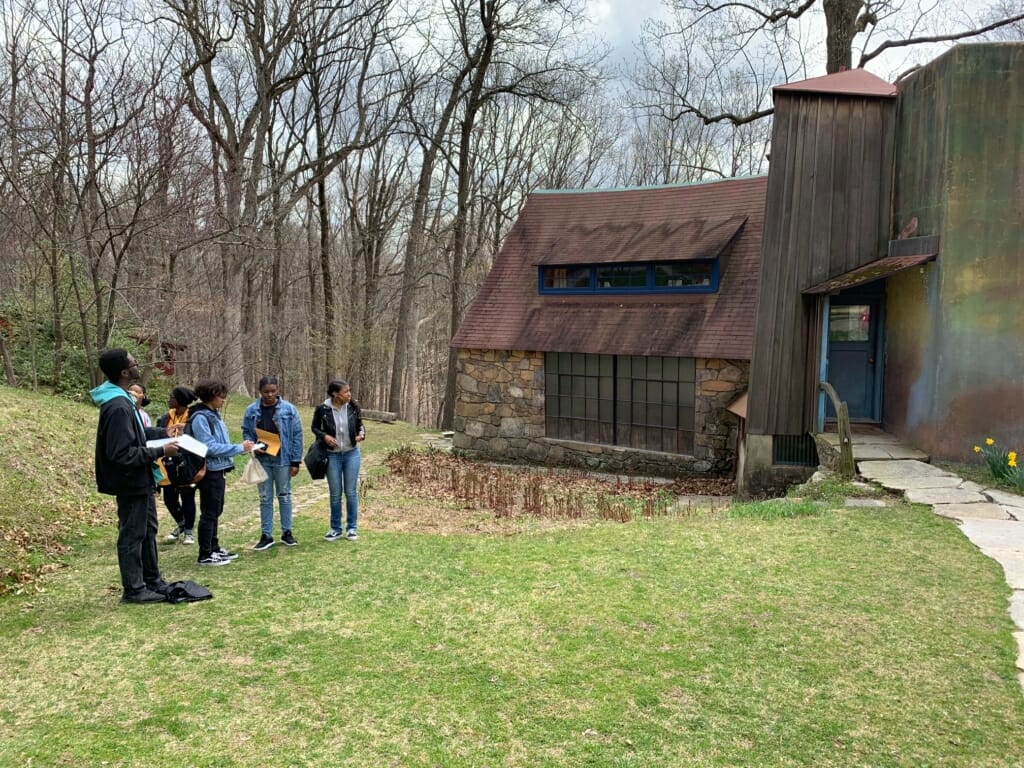
Students from Penn Wood High School drawing inspiration from Esherick’s architecture
Teachers, none of this would be possible without you. You have made Imprint possible, even in such a difficult year with such enormous challenges. You make the Wharton Esherick Museum possible, allowing us to achieve our mission every day. To those of you teaching now, I have no doubt that your dedication, creativity, and perseverance have had a profound impact on your students and will see them through the unique challenges of this moment. You continue to inspire me to be the best possible educator I can be. Thank you to Esherick and to all teachers, past, present, and future, who have sparked (or will spark) a similar love of art in their students.
Interested in a virtual field trip? Email [email protected]. We can work with you to provide a meaningful experience tailored to the needs of your students.
Explore our At Home Activities for teachers and families, including lesson plans for K-12 students.
Read more about Imprint in our blog post, The Evolution of Imprint: Young Printmakers Highlight Wharton Esherick
Read more of Wendell Castle’s remarks on Esherick’s influence.
Post written by Visitor Engagement Manager, Maria Franey.
April 2021

